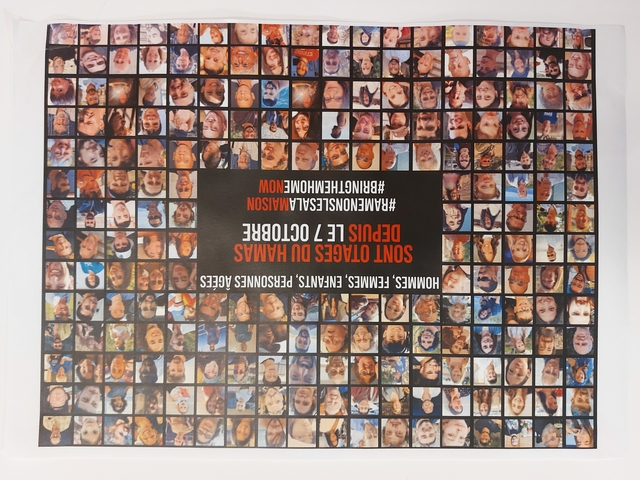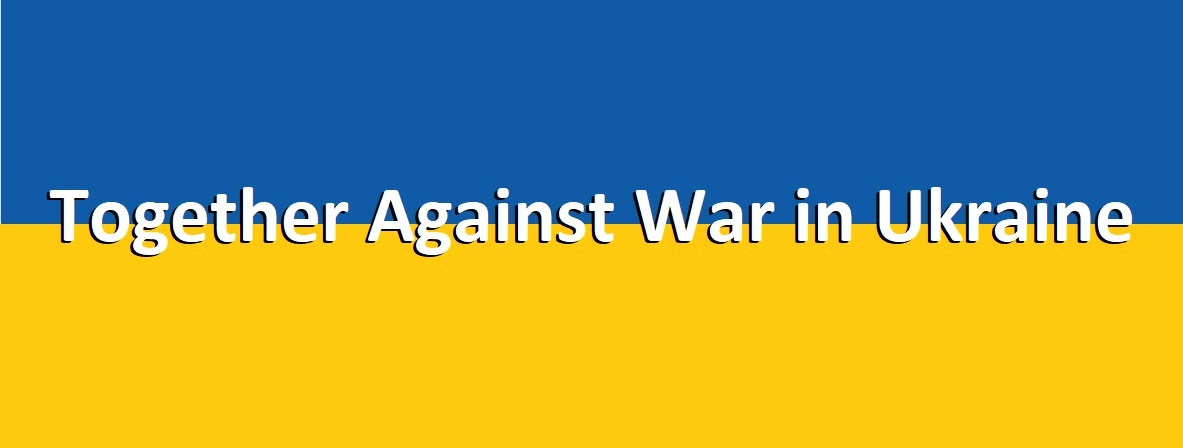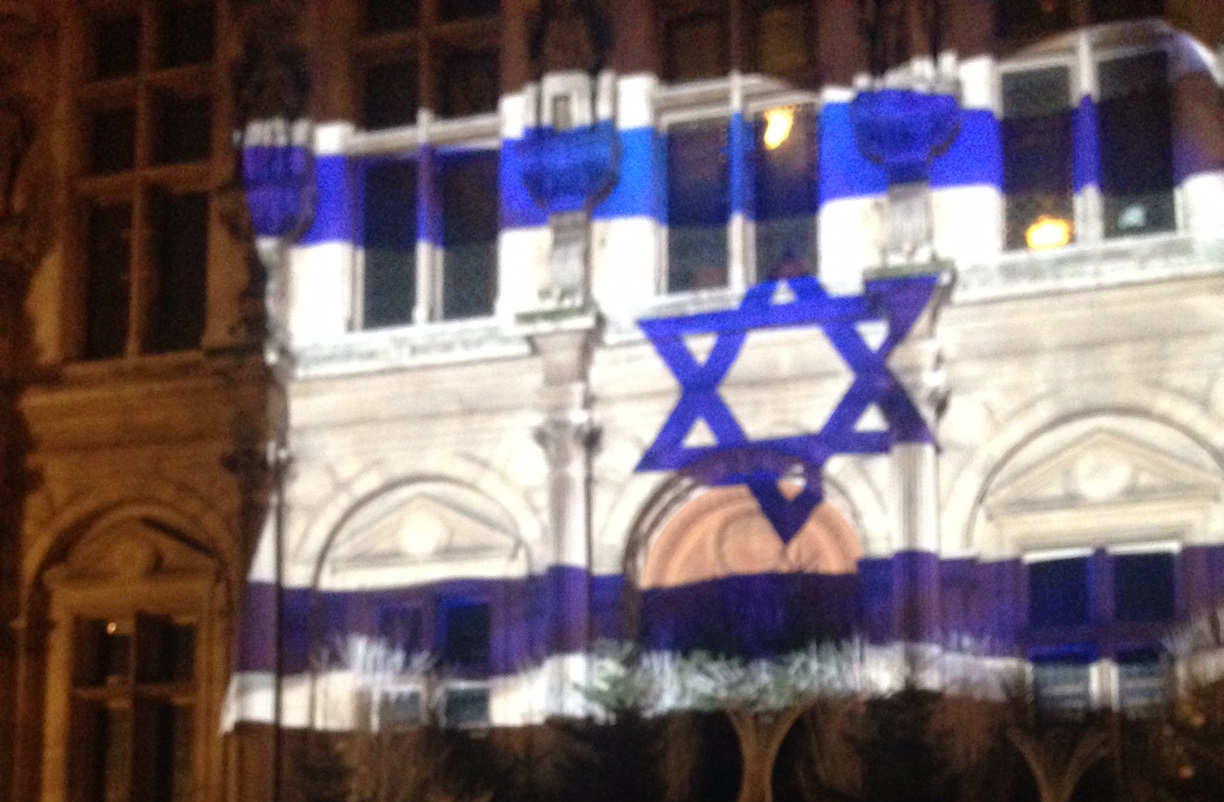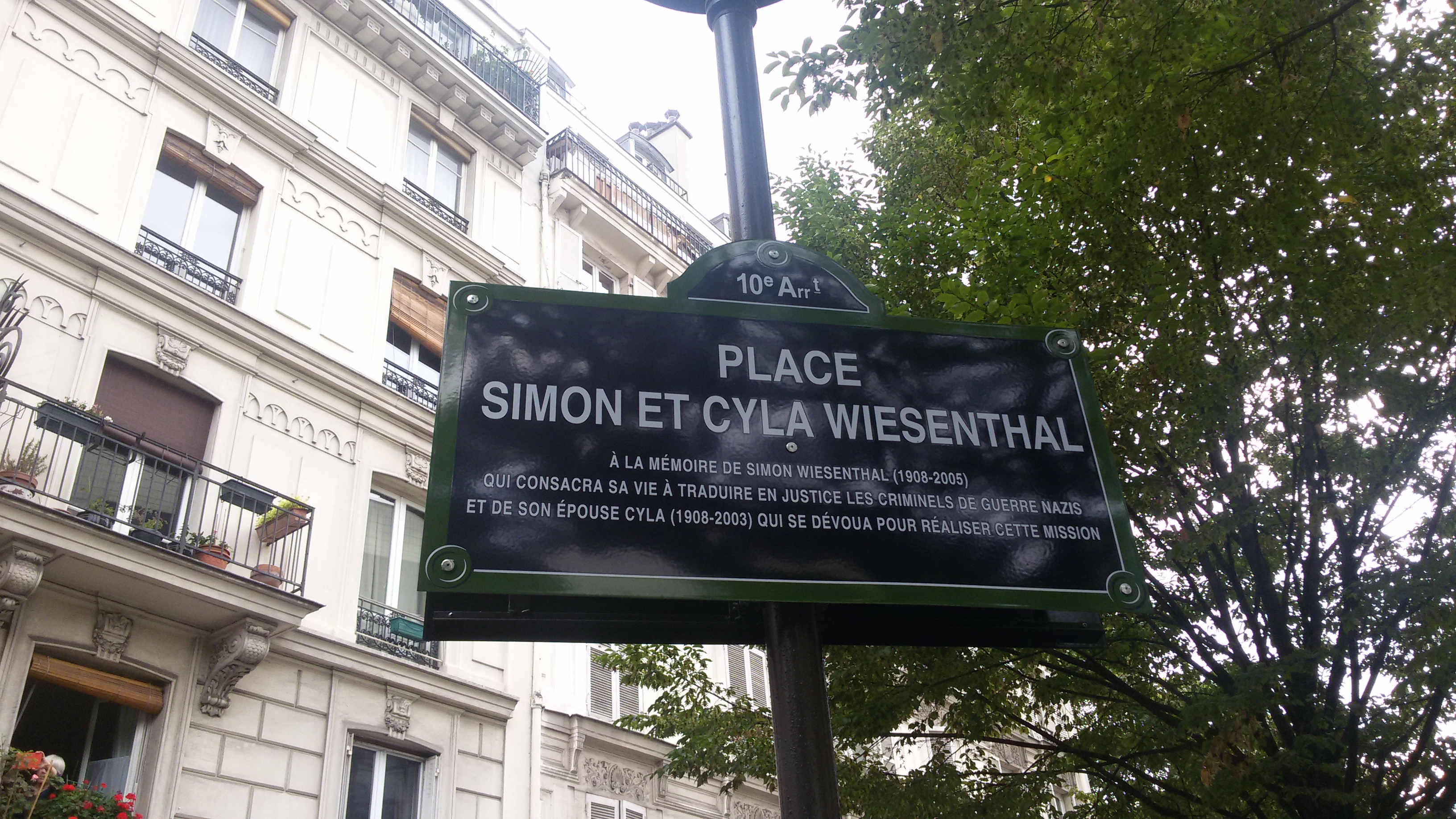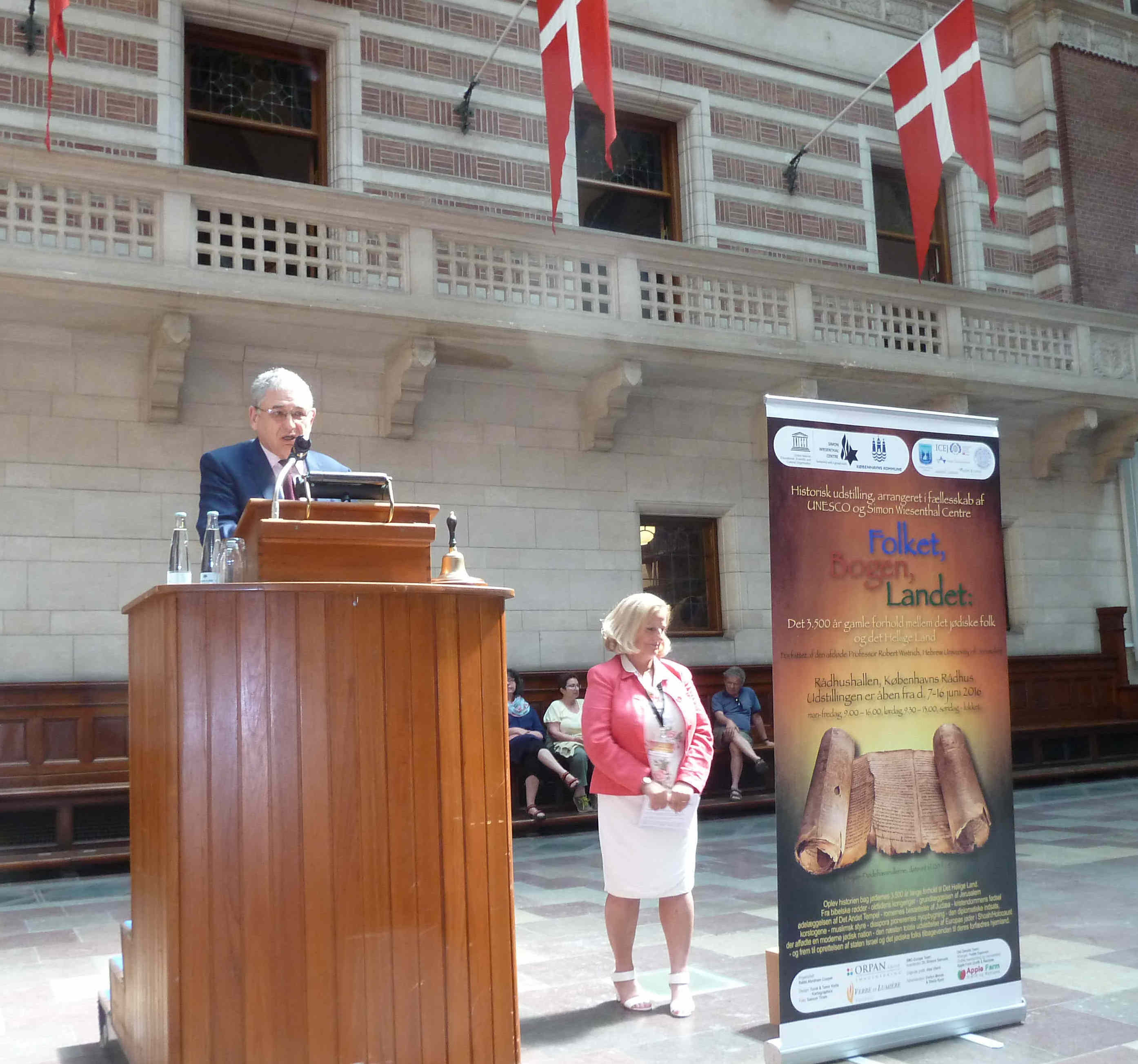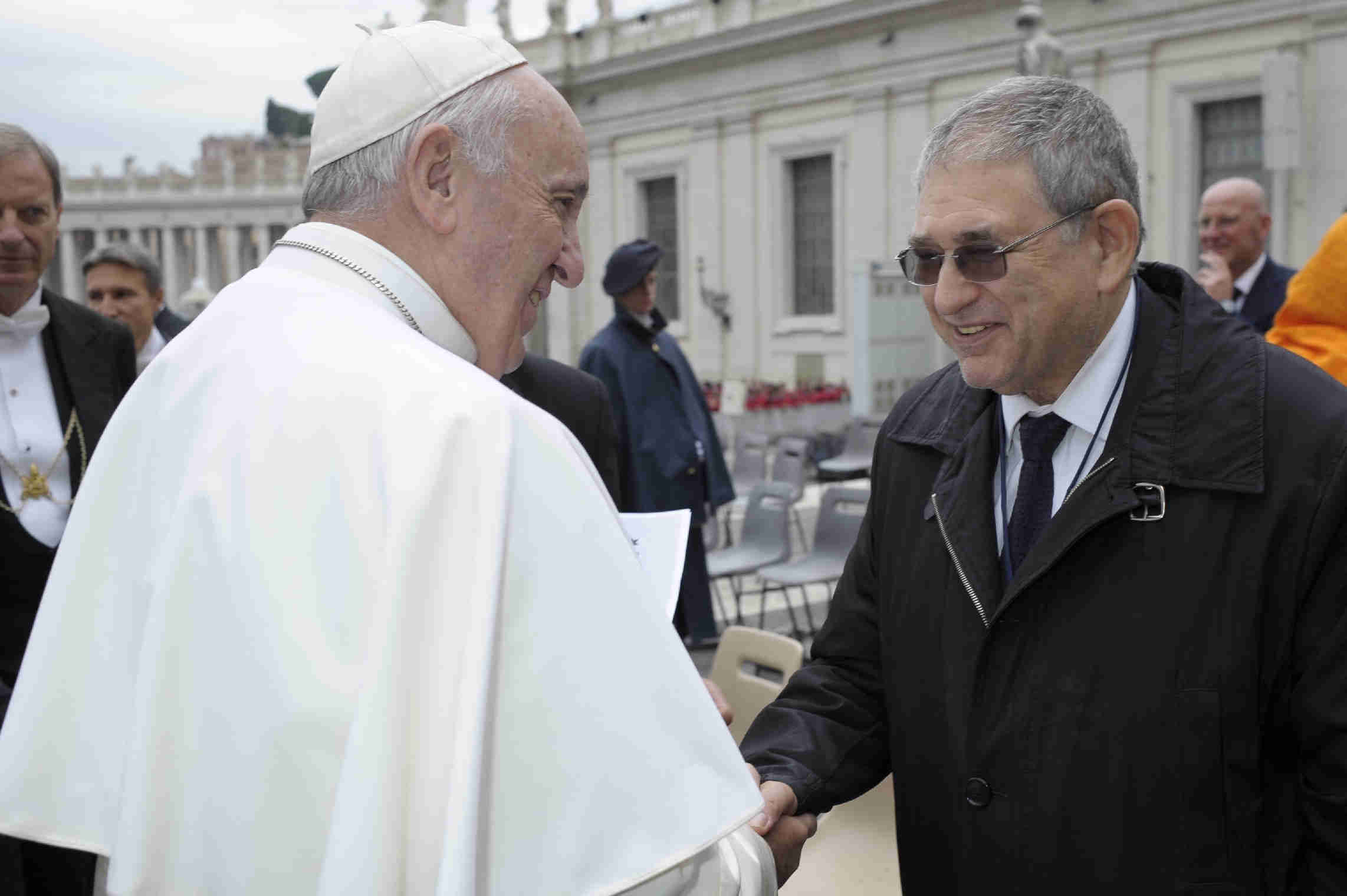Warsaw, 19 April 2023
The Polish Jews who left their country in 1968 annually meet in Israel, on occasion addressed by the Wiesenthal Centre’s Director for International Relations, Dr Shimon Samuels.
This year, they met on the 80th anniversary of the Warsaw Ghetto Uprising, by invitation of Poland’s Presidential Chancellery.
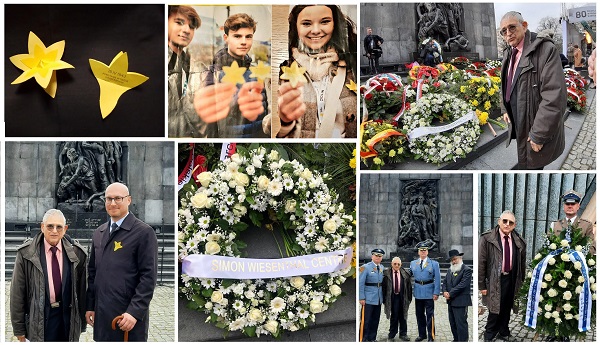
(top, left to right) the daffodil/stars; Polish youth with daffodils; Samuels laying the wreath.
(below, left to right) Samuels with Head of Polish Presidential Chancellery; the Simon Wiesenthal Centre’swreath;
Samuels with Rabbi Carlebach and New Jersey State Police officers; Samuels with wreath of the State of Israel.
The 1967 victory of Israel in the “Six-Day War” was badly received by the Communist bloc. The impact further hardened harassment against Soviet Jewry and, in 1968, the Red Army tanks rolled into Czechoslovakia to repress popular dissidence.
Neighbouring Poland was itself infected by a wave of antisemitism – opening a window of departure for some 13,000 Jews, despite the cancellation of their passports. Some 3,000 remained, while the others formed a diversified and dispersed family of refugees – “those of March ‘68.”
Based on Isaiah, “In every generation, they rise against us.”
At a time of differences with Israel regarding the role of Polish collaboration with Nazis during WW2, an opportunity to address youth on the Warsaw Ghetto commemoration might have been sadly lost.
Over half a century ago, in 1969, our mentor, Simon Wiesenthal, had written a book entitled “The Sunflower”.
After risking being shot and dumped in a mass grave, in 1943 Wiesenthal was commandeered to a hospital as a forced labourer clearing medical waste. On his way to pick up another load of soiled bandages, he was stopped by a nurse to be taken to meet a dying SS soldier. The latter wanted a Jew to forgive him for his crimes.
Grasping his hand, the Nazi pleaded. Breaking loose, Wiesenthal looked through the window at a German graveyard, decked with sunflowers. He thought of his people’s unmarked mass graves. Instead, the murderers had sunflowers.
That night, Wiesenthal consulted his fellow prisoners, asking their opinion whether one could pardon mass murder? They all concurred that he did not have the right to forgive, even for his own murdered family.
“The Sunflower” is a very short book, based on this question – that was also sent to eminent political, religious, cultural figures after WW2 – and includes the many responses.
On the plane to Warsaw, I noticed a Polish magazine showing young people wearing small paper daffodils, that would unfold into yellow stars... Speaking with young Poles, I asked them what the yellow daffodils represent. Some shied away, others told me “daffodils represent the Spring!”
At the impressive commemoration ceremony, the speakers honoured the Jewish martyrs who, against all odds, stood up to the Nazi occupation and persecution. Their brave resistance set an example for generations to come.
The same testimony should be brought to schools across Poland... so that the daffodils mean not only the beginning of Spring. “The Sunflower” should also become part of the curriculum, especially in times of controversy over ethics and justice. “Otherwise, today would be an opportunity lost!” concluded Samuels.
* * *
For further information, contact csweurope@gmail.com
